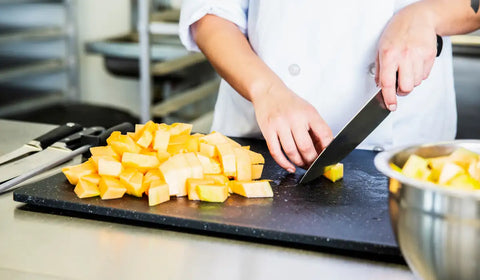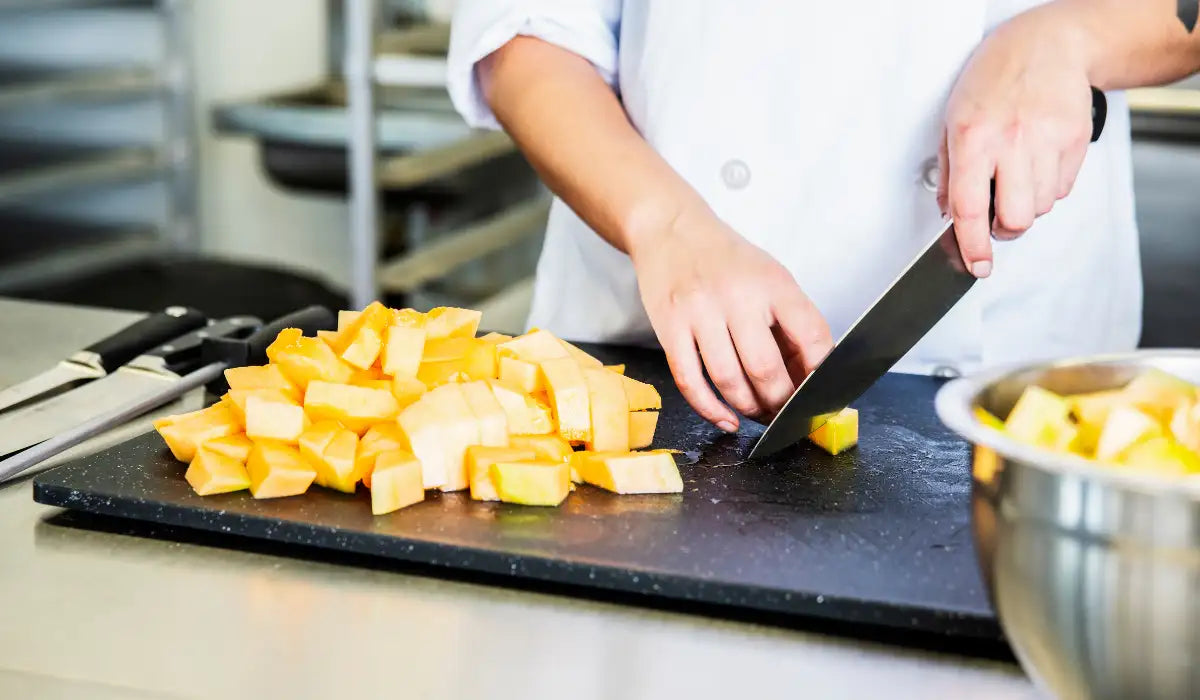Mastering Cutting Techniques-How to Choose the Right Kitchen Knife for Every Task
In the kitchen, having the right knife can transform your cooking experience. Understanding different cutting techniques is essential for any chef, whether you're a beginner or a professional. By mastering how to choose the right knife for every task, you will enhance your overall culinary skills and efficiency. From chopping vegetables to filleting fish, using the appropriate knife ensures precision and safety.
Understanding Knife Types
Chef's Knife
The chef's knife is often regarded as the most versatile tool in the kitchen. Typically ranging from 8 to 10 inches, this knife excels in various tasks:
- Chopping vegetables.
- Slicing meat or poultry.
- Dicing onions and herbs.
Its wide blade allows for a rocking motion that aids in efficient chopping. A well-balanced chef's knife can make your cooking experience smoother and more enjoyable.
Paring Knife
The paring knife may be small, but it offers great precision. It is ideal for intricate tasks such as peeling fruits, trimming fat from meat, or mincing garlic. Its shorter blade (generally around 3 to 4 inches) allows for better control when working with smaller items. If you're looking for accuracy, the paring knife is your best friend.
Specialty Knives and Their Uses
Utility Knife
A utility knife bridges the gap between a chef's knife and a paring knife. Typically around 6 inches long, it is useful for slicing sandwiches, soft fruits, and even tender cuts of meat. It's a handy tool for tasks that require a bit more control than a chef's knife but that a paring knife might not handle well.
Boning Knife
When dealing with meat, a boning knife is essential. With a thin, flexible blade, it is designed for removing bones from cuts of meat or fish. It allows precision while trimming fat or skin, making it a valuable tool for any meat lover.
Understanding Cutting Techniques
Chiffonade Cut
The chiffonade cut is ideal for leafy greens and herbs. To achieve this, stack the leaves, roll them tightly, and then slice them thinly. This technique results in long, elegant strips, adding visual appeal to your dishes.
Brunoise Cut
Brunoise refers to a fine dice, typically used for vegetables. It involves cutting the ingredients into thin strips and then cutting those strips into tiny cubes. This technique is perfect for garnishing soups or adding flavor and texture to salads.
Choosing the Right Steel for Your Knife
Types of Steel
When selecting a knife, consider the type of steel used for its construction. High-carbon stainless steel is known for its sharpness and ability to hold an edge, making it a popular choice for high-end knives. In contrast, cheaper knives often use lower-quality steel, which may require frequent sharpening and lacks durability.
Damascus Steel Chef's Knife Set
For optimal performance, consider investing in a quality knife set like the Handmade Damascus Steel Chef's Knife Set. This 5-piece kitchen knife set features high-carbon steel blades and comfortable Micarta handles, ensuring a perfect balance between durability and comfort for any cooking style.
Maintaining Your Knives for Longevity
Knife Care
Proper care and maintenance will extend the life of your knives. Regularly hone the blade using a honing rod to maintain sharpness. Additionally, hand-wash and dry your knives immediately to avoid rust and stains. Store them appropriately in a knife block or sheath to protect the blades.
Learning Knife Skills
As an aspiring chef, mastering knife skills is crucial. Practice different cutting techniques and familiarize yourself with the characteristics of each knife. Understanding how to hold a knife correctly and the right cutting motion will greatly improve your efficiency and safety during food preparation.
Conclusion
Choosing the right knife for every cooking task is crucial to mastering cutting techniques. With various types of knives available and specific uses for each, it's essential to familiarize yourself with their functions to enhance your culinary endeavors. Invest in high-quality knives and learn proper maintenance techniques to ensure their longevity. As you practice and refine your knife skills, you'll find that cooking becomes more efficient and enjoyable. Embrace the art of cutting and elevate your cooking experience!
FAQs
What knife should I start with?
A chef's knife is highly recommended for beginners due to its versatility and range of uses. It can handle various tasks from chopping vegetables to slicing meat.
How often should I sharpen my knives?
It depends on usage, but generally, honing your knife before each use and sharpening it every 6 months will help maintain its edge. Frequent use may require more regular sharpening.
Is it necessary to buy a knife set?
While knife sets can offer convenience, starting with a few essential knives—like a chef's knife, paring knife, and utility knife—can be sufficient for most home cooks. You can expand your collection as you gain experience and understand what additional knives suit your cooking style.


